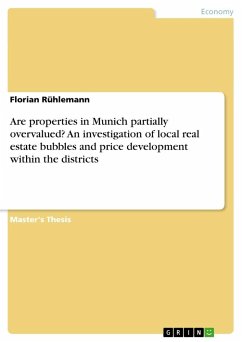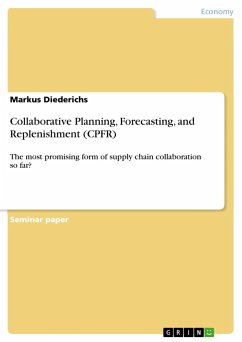Master's Thesis from the year 2017 in the subject Business economics - Miscellaneous, , language: English, abstract: There is an abundance of existing literature regarding time series forecasting and the housing market. This thesis evaluates the performance and statistical adequacy of several time series models in the context of real estate price forecasting in Finland. Each statistical model is applied so that forecasts are generated over the seven quarters following the training sample. The resulting forecasts are compared against realized price development. Model evaluation is carried out from the viewpoint of forecasting errors in the validation period, statistical fit, modelling constraints and success in the light of the theoretical framework. It was concluded that scarce ARIMA-based models are suitable for short-term real estate price forecasting in the concerned setting. The models were built on logarithmic I(1) nominal data and augmented with seasonal dummy variables. The Chen & Liu (1993) structural anomaly detection method enhanced statistical fit in the training period and forecasting accuracy in the validation period. The inclusion of a drift parameter generally led to inflated forecasting results in the validation period. The RMSE and MAE error statistics produced by the best ARIMA-based models remained well below 0.5 % in the validation period. The Holt & Winters and I(1) OLS models were also outperformed by the most adept ARIMA-based models. The independent variables were chosen along with the four quadrant framework introduced by DiPasquale & Wheaton (1992). Introduction of exogenous factors generally improved the forecasting performance exhibited by ARIMA(p,1,q)-based models, which realized in terms of forecasting error statistics. Theoretical equivalence to the four quadrant framework was achieved to a large extent. Mortgage rate displayed negative correlation with real estate prices whereas disposable income was positively correlated with the price level. However, the number of new construction permits displayed a positive relationship with the FIN real estate price index.








